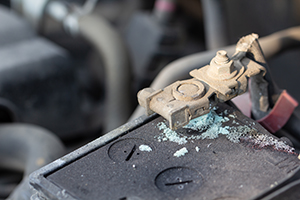
In the rapidly evolving field of lubrication technology, the development of advanced corrosion inhibitors has become a critical focus for formulators. As industries continue to seek more efficient and durable solutions for protecting machinery and equipment, the need for innovative corrosion inhibition strategies is paramount. This article explores the latest advancements in corrosion inhibitors, highlighting their chemistry, benefits, and implications for lubricant formulations.
- Emerging Classes of Corrosion Inhibitors
Recent research has unveiled several new classes of corrosion inhibitors that promise to enhance the performance and longevity of lubricants. Key among these are:
- Nanomaterials: Nanotechnology has introduced a new dimension to corrosion inhibition. Nanoparticles, such as zinc oxide (ZnO) and cerium oxide (CeO₂), have shown exceptional efficacy in forming protective layers on metal surfaces. These nanomaterials can provide a dual action: they not only inhibit corrosion but also improve the lubricating properties of the formulation.
- Organic-inorganic Hybrids: These inhibitors combine organic molecules with inorganic materials to create multifunctional additives. For example, organic phosphates and phosphonates integrated with silica or clay matrices offer enhanced stability and longer-lasting protection. These hybrids can form robust protective films and are particularly effective in harsh environments.
- Green Inhibitors: With a growing emphasis on sustainability, green corrosion inhibitors derived from natural sources have gained traction. Plant extracts, such as those from neem or hibiscus, contain compounds that can effectively inhibit corrosion while being environmentally friendly. These inhibitors are biodegradable and reduce the reliance on toxic chemicals.
- Advances in Mechanism and Functionality
Understanding the mechanisms by which corrosion inhibitors work is crucial for their effective application in lubricants. Recent developments in this area include:
- Molecular Engineering: Advances in molecular design have led to the creation of inhibitors with tailored functionalities. For instance, molecules with specific functional groups can be engineered to form stable complexes with metal surfaces, providing more efficient protection against corrosion.
- Self-Healing Coatings: Incorporating self-healing properties into corrosion inhibitors represents a significant innovation. These coatings can repair themselves when damaged, ensuring continuous protection. This is achieved through microcapsules containing corrosion inhibitors that release their contents when the coating is compromised.
- Smart Inhibitors: The development of smart corrosion inhibitors involves additives that respond dynamically to environmental changes. For example, inhibitors that activate under acidic or saline conditions can offer enhanced protection where it’s most needed.
Work smarter and win more, with powerful software to manage regulatory, supply chain and sustainability challenges. Learn more here!
- Integration with Lubricant Formulations
Integrating advanced corrosion inhibitors into lubricant formulations requires careful consideration of compatibility, performance, and regulatory compliance:
- Compatibility Testing: New corrosion inhibitors must be tested for compatibility with existing lubricant components to avoid adverse reactions. This includes assessing their impact on the lubricant’s viscosity, stability, and overall performance.
- Performance Evaluation: Advanced inhibitors should undergo rigorous testing to ensure they meet the performance standards required for various applications. This involves evaluating their effectiveness in preventing corrosion under different operating conditions and over extended periods.
- Regulatory Compliance: With increasing regulatory scrutiny, it is essential to ensure that new corrosion inhibitors comply with environmental and safety regulations. This includes evaluating their toxicity, biodegradability, and overall impact on health and the environment.
- Future Trends and Implications
Looking ahead, several trends are likely to shape the future of corrosion inhibition in lubricants:
- Customization and Tailoring: The demand for customized solutions will drive the development of corrosion inhibitors tailored to specific applications and environments. Formulators will increasingly seek inhibitors that provide targeted protection based on the unique needs of their clients.
- Enhanced Sustainability: As sustainability continues to be a priority, the focus will shift towards developing inhibitors that offer both high performance and minimal environmental impact. This includes increasing the use of biodegradable and non-toxic additives.
- Technological Integration: The integration of digital technologies, such as sensors and data analytics, will enable real-time monitoring and optimization of corrosion inhibitors in lubricant formulations. This can lead to more precise control and better performance.
The field of corrosion inhibitors is witnessing rapid advancements that offer exciting possibilities for lubricant formulators. From nanomaterials and green inhibitors to smart technologies and molecular engineering, the latest developments promise to enhance the effectiveness, sustainability, and customization of lubricant formulations. As these innovations continue to evolve, they will play a crucial role in meeting the growing demands for reliable and durable lubrication solutions in various industries.
The views, opinions and technical analyses presented here are those of the author or advertiser, and are not necessarily those of ULProspector.com or UL Solutions. The appearance of this content in the UL Prospector Knowledge Center does not constitute an endorsement by UL Solutions or its affiliates.
All content is subject to copyright and may not be reproduced without prior authorization from UL Solutions or the content author.
The content has been made available for informational and educational purposes only. While the editors of this site may verify the accuracy of its content from time to time, we assume no responsibility for errors made by the author, editorial staff or any other contributor.
UL Solutions does not make any representations or warranties with respect to the accuracy, applicability, fitness or completeness of the content. UL Solutions does not warrant the performance, effectiveness or applicability of sites listed or linked to in any content.
